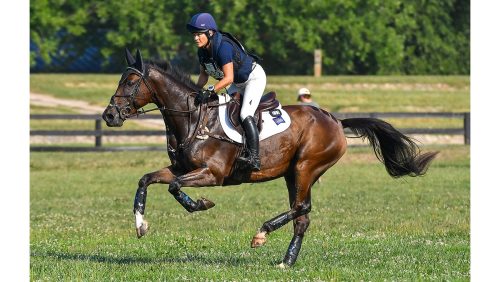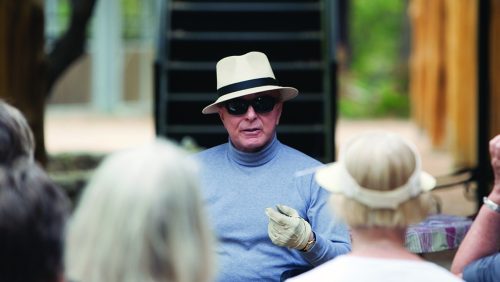Last summer Spy Coast Farm’s sports medicine veterinarian, Dr. Julie Vargas, DVM, was brainstorming ways to help the horses with neurological deficits who come through their Lexington, Kentucky, rehabilitation facility when she came up with an idea: What if they had a dummy rider to help horses who weren’t yet coordinated enough for a human rider, so the horses could get used to carrying some weight?
Rehab office manager Mary-Kate McClure decided to make that happen. She searched online until she found a grappling dummy, which she used for the outer shell. Then she and her sister, Hannah McClure, wandered through Lowes looking at different types of materials to stuff into the suit to add weight, and they put the dummy together in Hannah’s garage. They dubbed their creation “Sandy” after the sand they selected, along with rubber gardening chips, to add heft to the dummy’s body.

“We found a large need for Sandy in bridging the gap between groundwork [and riding],” said Mary-Kate. “We have a lot of treadmills here at the rehab, and they are so incredibly influential for these horses with neurologic deficits. They are so, so good at getting conditioning back, developing muscle tone and helping build the nerve pathways that have been damaged, from whatever condition they were experiencing. But there was a gap in what we felt we could provide because those horses got stronger and fitter and more in line with what we’d like to see before we started riding, but there’s a gamble putting someone on their back, and some of them weren’t quite ready for a rider.”
Horses who are ready for Sandy are tacked up with a special saddle, then two people position Sandy in the saddle at the mounting block. At first staff tied Sandy onto the saddle; now they have a series of straps that hold him in place, which they can adjust to give him more or less movement.
“It’s interesting to see: We can longe them without the weight on there, and they might look coordinated and seem like they’re doing quite well, then put 60 or 70 pounds of Sandy on their back, and it gets much harder for them,” said Mary-Kate. “It will bring about some of the weakness and instability again. It adds to the learning curve for them.
ADVERTISEMENT
“We’ve never put Sandy on and said, ‘Oh, this is a mistake,’ ” she added. “But we’ve put Sandy on and said, ‘Oh, we have some things to work on.’ And that’s OK; that’s what Sandy’s for.”
Sandy, who sits on a chair in the tackroom when he’s not in the saddle, has been useful with horses recovering from equine protozoal myeloencephalitis, Wobbler syndrome and other conditions that cause a neurological deficit, getting the ride for a few weeks or months until a horse is ready for a rider.
Mary-Kate will send pictures of patients with Sandy riding to owners, much to their delight.
“It’s been a really good response from clients,” said Mary-Kate. “Once they understand the concept it really is beneficial, and everybody gets to have a laugh about how goofy it is that we put this dummy up there. It keeps it lighthearted.”
This article appears in the May 8 & 15, 2023, issue of The Chronicle of the Horse. You can subscribe and get online access to a digital version and then enjoy a year of The Chronicle of the Horse and our lifestyle publication, Untacked. If you’re just following COTH online, you’re missing so much great unique content. Each print issue of the Chronicle is full of in-depth competition news, fascinating features, probing looks at issues within the sports of hunter/jumper, eventing and dressage, and stunning photography.














